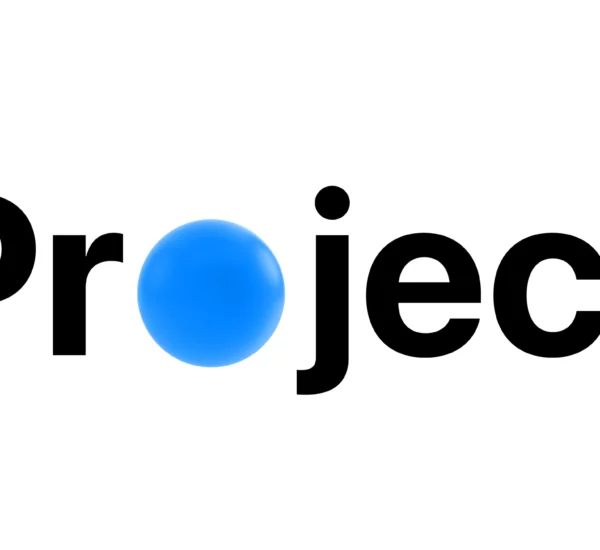Project management methodologies are frameworks and approaches that organizations use to plan, execute, and control projects. There are many different methodologies to choose from, each with its own set of tools and techniques. Selecting the right methodology for a specific project can be challenging, as it requires considering the project’s goals, constraints, and resources.
Here are some of the most popular project management methodologies, along with their key features and benefits:
Kanban – Simple project management
Kanban is a project management methodology that originated in Japan and is based on the principles of Just-In-Time (JIT) production. It involves using visual signals to manage the flow of work and is based on the pull principle, where work is pulled through the system as it is needed. Kanban is suitable for projects with a high degree of uncertainty, as it allows for flexibility and adaptability.
Key features:
- Visual signals to manage workflow
- Pull principle for work management
- Continuous improvement
Benefits:
- Improved visibility and transparency
- Increased flexibility and adaptability
- Faster delivery of high-quality products
Agile
Agile is a flexible, iterative approach to project management that emphasizes continuous delivery, collaboration, and adaptation to change. Agile methodologies are based on the Agile Manifesto, which outlines 12 principles for delivering high-quality software. There are several variations of Agile, including Scrum, Lean, and Extreme Programming (XP).
Key features:
- Iterative and incremental delivery
- Collaboration and transparency
- Adaptation to change
Benefits:
- Flexibility and adaptability
- Faster delivery of high-quality products
- Improved customer satisfaction
Lean
Lean is a project management methodology that emphasizes on maximizing value and minimizing waste. It is based on the principles of the Toyota Production System and focuses on delivering high-quality products as efficiently as possible. Lean is suitable for projects with high uncertainty and complex requirements, as it allows for rapid experimentation and learning.
Key features:
- Value-driven approach
- Continuous improvement
- Elimination of waste
Benefits:
- Increased efficiency and productivity
- Improved quality and customer satisfaction
- Faster delivery of high-value products
Scrum
Scrum is an Agile project management methodology that is based on the principles of transparency, inspection, and adaptation. It involves dividing the project into short iterations called sprints, and using regular meetings called stand-ups, reviews, and retrospectives to track progress and adapt to change. Scrum is suitable for projects with a high degree of uncertainty, as it allows for flexibility and adaptability.
Key features:
- Transparency, inspection, and adaptation
- Short iterations called sprints
- Regular meetings to track progress and adapt to change
Benefits:
- Increased flexibility and adaptability
- Faster delivery of high-quality products
- Improved customer satisfaction
Waterfall
Waterfall is a linear methodology that follows a predetermined sequence of steps. It involves dividing the project into distinct phases, and moving from one phase to the next in a sequential manner. Waterfall is suitable for projects with well-defined requirements and a stable scope, as it allows for detailed planning and control.
Key features:
- Clear and distinct phases
- Detailed planning and documentation
- A strict change control process
Benefits:
- Suitable for projects with a stable scope
- Allows for detailed planning and documentation
- Provides clear and distinct phases, making it easy to track progress
Six Sigma
Six Sigma is a data-driven approach to project management that aims to eliminate defects and variability in processes. It is based on the DMAIC (Define, Measure, Analyze, Improve, Control) methodology, which involves identifying and improving the root causes of defects and variability. Six Sigma is suitable for projects with high variability and a focus on process improvement.
Key features:
- Data-driven approach
- Defect and variability reduction
- Root cause analysis
Benefits:
- Improved process efficiency and effectiveness
- Increased customer satisfaction
- Reduced costs and defects
Critical Path Method (CPM)
Critical Path Method (CPM) is a project management technique that involves identifying the tasks that are critical to the project’s success and the dependencies between them. It is used to identify the minimum amount of time required to complete a project and to identify the activities that are on the critical path. CPM is suitable for projects with a well-defined scope and clear dependencies between tasks.
Key features:
- Identification of critical tasks and dependencies
- Determination of the minimum project duration
- Resource allocation and leveling
Benefits:
- Improved project planning and scheduling
- Identification of potential delays or bottlenecks
- Better resource utilization
Lean Six Sigma
Lean Six Sigma is a hybrid project management methodology that combines the principles of Lean and Six Sigma. It is based on the DMAIC methodology and focuses on maximizing value and minimizing waste. Lean Six Sigma is suitable for projects with a focus on process improvement and defect reduction.
Key features:
- Combination of Lean and Six Sigma principles
- DMAIC methodology
- Value and waste maximization
Benefits:
- Improved process efficiency and effectiveness
- Increased customer satisfaction
- Reduced costs and defects
Critical Chain Project Management (CCPM)
Critical Chain Project Management (CCPM) is a project management methodology that focuses on resource management and buffer management. It involves identifying the critical chain of tasks in a project and allocating resources accordingly. CCPM is suitable for projects with a high degree of uncertainty, as it allows for flexibility and adaptability.
Key features:
- Resource management and buffer management
- Identification of the critical chain of tasks
- Flexibility and adaptability
Benefits:
- Improved resource utilization
- Increased project predictability
- Faster delivery of high-quality products
Here are some additional points to consider when selecting a project management methodology:
- There are many other project management methodologies to choose from, including Lean Startup, Design Thinking, and Lean UX. Ultimately, the best methodology for a specific project will depend on the project’s goals, constraints, and resources. It is important to choose a methodology that is suitable for the project, and to be open to adapting and adjusting
- Align the methodology with the project goals: It is important to choose a methodology that is aligned with the project’s goals and objectives. For example, if the project goal is to deliver a high-quality product as efficiently as possible, Lean or Six Sigma might be a good fit. If the project goal is to deliver a product quickly and adapt to change, Agile might be a better fit.
- Consider the project constraints: It is also important to consider the project’s constraints, such as budget, timeline, and resources when selecting a methodology. Some methodologies, such as Waterfall, require a lot of upfront planning and are more suited to projects with a stable scope and a fixed budget. Other methodologies, such as Agile, are more flexible and adaptable and are suitable for projects with a high degree of uncertainty.
- Choose a methodology that fits the team’s skills and culture: It is important to choose a methodology that fits the skills and culture of the project team. Some methodologies, such as Six Sigma, require a high level of data analysis and statistical skills, while others, such as Scrum, emphasize collaboration and teamwork. It is important to choose a methodology that the team is comfortable with and can effectively implement.
- Be open to adapting and adjusting the methodology: It is important to be open to adapting and adjusting the methodology as the project progresses. No methodology is perfect, and it is likely that the project will encounter unforeseen challenges or changes in scope. It is important to be flexible and adaptable and to adjust the methodology as needed to ensure the project’s success.
In conclusion, project management methodologies are frameworks and approaches that organizations use to plan, execute, and control projects. There are many different methodologies to choose from, and the best one for a specific project will depend on the project’s goals, constraints, and resources. It is important to choose a methodology that is aligned with the project’s goals, fits the team’s skills and culture, and is adaptable to change.



